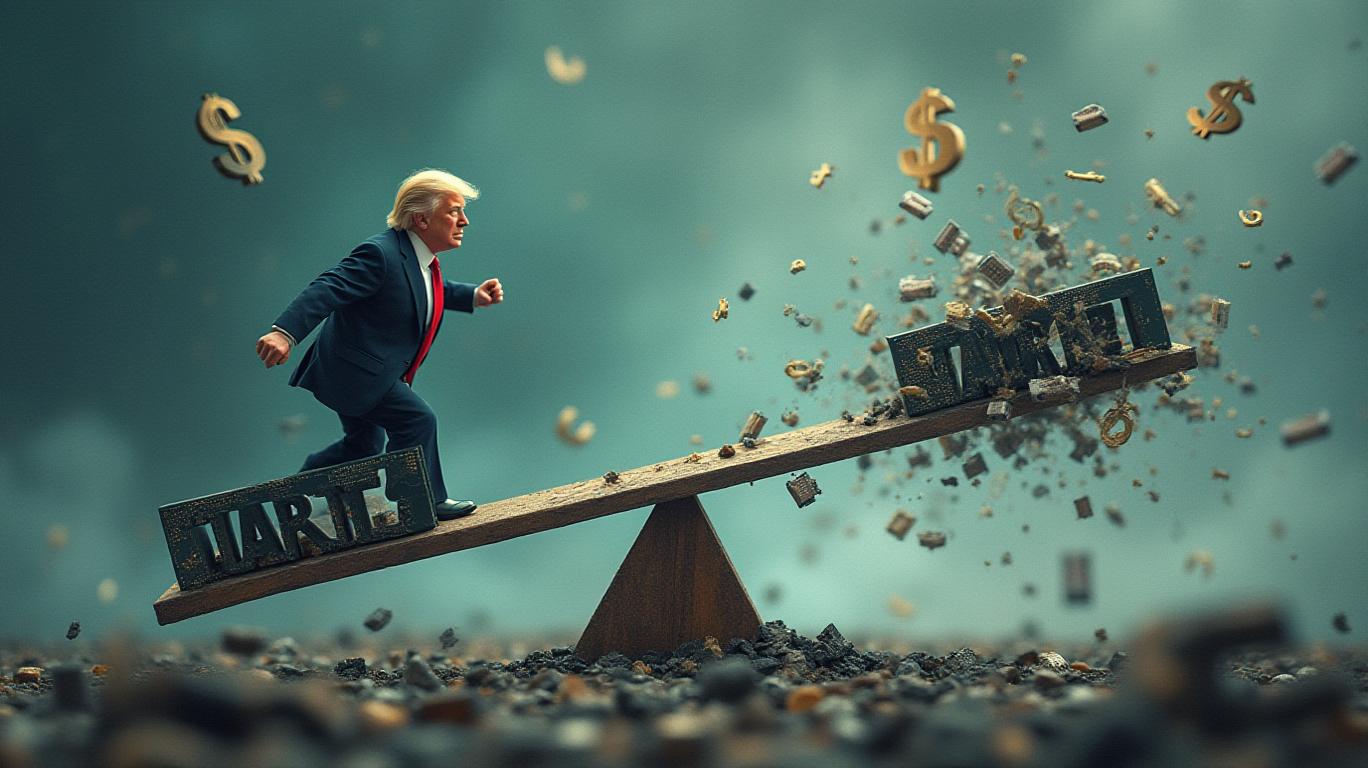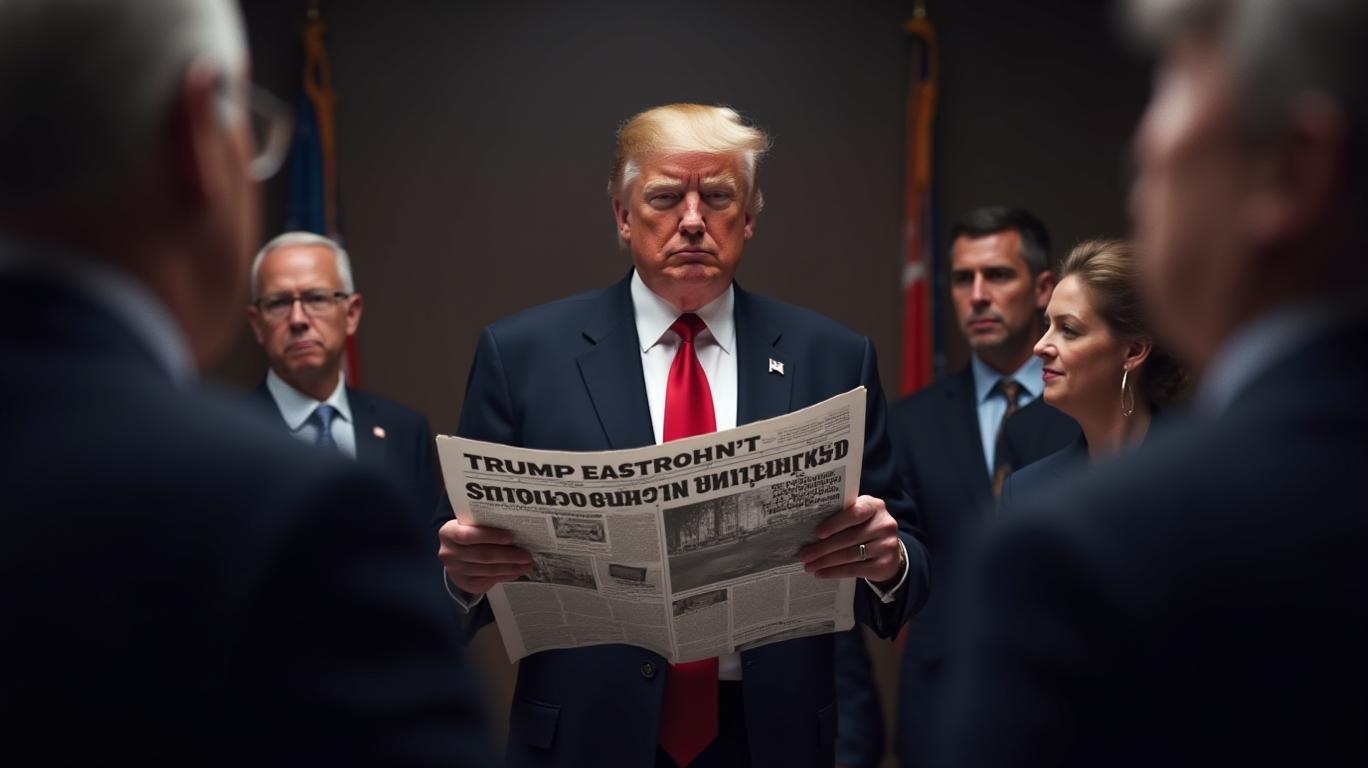Trump's Tariff Tightrope: Electronics, Semiconductors, and the Economic Fallout

The U.S. under President Donald Trump has once again thrown a wrench into global trade, this time targeting electronics and semiconductors with tariffs framed as a national security imperative. While a 90-day exemption on smartphones and laptops briefly calmed markets, the administration’s recent clarifications—framing the move as a temporary reprieve rather than a permanent exception—have reignited volatility. The stakes are high: these tariffs could reshape global supply chains, inflame inflation, and test investor patience as the U.S.-China trade war escalates.
Ask Aime: What impact will the U.S. tariffs on electronics and semiconductors have on the global supply chain and the U.S.-China trade war?
The Tariff Tightrope: Strategy vs. Chaos
Trump’s latest maneuver involves reclassifying electronics under a new “semiconductor tariffs” bucket, maintaining a 20% levy originally imposed as part of the “Fentanyl Tariffs.” Commerce Secretary Howard Lutnick emphasized that critical technologies like semiconductors and pharmaceuticals would face “special focus-type tariffs” within months, arguing they’re essential to “bringing production back to the U.S.” This isn’t just about economics—it’s a geopolitical gambit to reduce reliance on China, which currently dominates semiconductor manufacturing and supply chains.
But the market’s reaction has been anything but steady. After an initial boost when the 90-day exemption was announced, the S&P 500 has plunged 10% since Trump’s January 2025 return to power.
Ask Aime: Will Trump's latest tariff move affect the S&P 500?
Market Volatility: Tech Stocks in the Crossfire
Tech stocks, which initially rallied on the exemption news, have since faced renewed pressure. Apple and Nvidia, two heavyweights reliant on Asian supply chains, saw brief gains before retreating as investors digested Trump’s warning that “no exceptions” would endure.

The semiconductor sector faces particular scrutiny. Lutnick’s announcement that tariffs on chips could hit within “a month or two” has investors bracing for fallout. Analysts warn that even a 20% tariff on chips could force companies to raise prices, squeezing margins and consumer demand.
Global Backlash and the China Factor
Beijing, while momentarily relieved by the exemption, remains defiant. China’s commerce ministry dismissed the move as a “small step” and reiterated demands for the U.S. to abandon its “erroneous” tariff strategy. Retaliatory measures have already pushed U.S. levies on Chinese goods to 145%, with China matching at 125%, creating a tit-for-tat cycle that’s destabilizing global supply chains.
The ripple effects are severe. U.S. farmers in Trump’s heartland states are once again caught in the crossfire, as agricultural exports face renewed tariffs.
The Political Tightrope: Domestic and International Fallout
Domestically, the tariff chaos is straining Republican unity. Senator Elizabeth Warren has joined critics in condemning the policy as “inflationary and chaotic,” while legal battles over Trump’s immigration crackdowns and deportation policies further erode political cohesion.
Internationally, the tariffs are part of a broader aggressive strategy. Trump’s envoy Steve Witkoff is leveraging similar trade tactics in nuclear talks with Iran, signaling a pattern of economic coercion. Meanwhile, Chinese President Xi Jinping’s Southeast Asia tour—focusing on Vietnam and other manufacturing hubs—hints at Beijing’s efforts to diversify supply chains away from U.S. pressure.
Conclusion: A Costly Gamble with Uncertain Payoffs
The Trump administration’s semiconductor and electronics tariffs represent a high-risk, high-reward gamble. While the goal of reshoring critical industries is compelling, the immediate costs are stark:
- Market Volatility: The S&P 500’s 10% decline since January underscores investor anxiety.
- Inflation Risks: Tariffs on chips could add 5-8% to device costs, squeezing consumers.
- Geopolitical Escalation: Retaliatory tariffs have pushed U.S.-China trade barriers to historic highs, with no clear path to resolution.
For investors, the path forward is fraught. Tech stocks like Apple and Nvidia face headwinds unless companies can absorb tariff costs without passing them to consumers. Meanwhile, sectors like agriculture and manufacturing in GOP strongholds could see prolonged pain.

In the end, Trump’s tariff strategy may achieve its strategic goal of reducing reliance on China, but at a steep price: economic instability, higher consumer costs, and a prolonged period of uncertainty. Investors would be wise to brace for more volatility—and hope the administration’s tightrope walk doesn’t lead to a fall.




